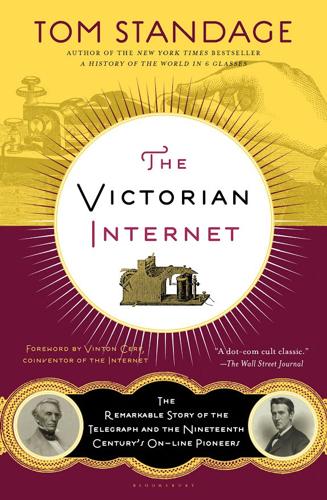
Victorian Internet
by
Tom Standage
Published 1 Jan 1998
Impressed by what he later described as Cooke's "zeal, ability and perseverance," Wheatstone eventually agreed to a partnership, on the rather childish condition that his name would go first on the documentation. This sort of behavior was typical of Wheatstone, who was a somewhat prickly character, and whose relationship with Cooke was always highly precarious. Ry turns painfully shy and incurably arrogant, Wheatstone insisted on referring to the invention of the telegraph in the first person singular and claiming all the scientific credit for himself, as though Cooke were nothing more than a business associate whom he had engaged to promote his invention. But even though they didn't get on personally, the two men's professional relationship was productive: They had soon devised and patented an improved five-needle telegraph.
…
The story goes that when some of the connecting wires broke, preventing three of the five needles from working, the operators quickly improvised a new code, based on multiple wiggles, which only required two needles. At any rate, Cooke and Wheatstone soon realized there was no need for all five, which meant that subsequent installations would require fewer wires and would be much cheaper. But the personal rivalry between the two men over which of them was principally responsible for the invention of the telegraph had, by this time, resurfaced. They eventually decided upon a gentlemanly way to resolve the matter: They appointed a panel of two mutual friends to act as arbitrators and agreed to be bound by their decision. In April 1841, the arbitrators came up with an artful compromise acceptable to both sides: "Whilst Mr.
…
With the telegraph's ability to destroy distance, it provided plenty of scope for exploiting information imbalances: situations where financial advantage can be gained in one place from exclusive ownership of privileged information that is widely known in another place. A classic example is horse racing. The result of a race is known at the racetrack as soon as it is declared, but before the invention of the telegraph, the information could take hours or even days to reach the bookmakers in other parts of the country. Anyone in possession of the results of a horse race before the news reached the bookmakers could then place a surefire bet on the winning horse. Almost immediately, rules were introduced to disallow the transmission of such information by telegraph; but, as is often the case with attempts to regulate new technologies, the criminals tended to be one step ahead of those making the rules.

Code: The Hidden Language of Computer Hardware and Software
by
Charles Petzold
Published 28 Sep 1999
Two types of blinks, two vowel sounds, two different anything, really, can with suitable combinations convey all types of information. Chapter 2. Codes and Combinations Morse code was invented by Samuel Finley Breese Morse (1791–1872), whom we shall meet more properly later in this book. The invention of Morse code goes hand in hand with the invention of the telegraph, which we'll also examine in more detail. Just as Morse code provides a good introduction to the nature of codes, the telegraph provides a good introduction to the hardware of the computer. Most people find Morse code easier to send than to receive. Even if you don't have Morse code memorized, you can simply use this table, conveniently arranged in alphabetical order: Receiving Morse code and translating it back into words is considerably harder and more time consuming than sending because you must work backward to figure out the letter that corresponds to a particular coded sequence of dots and dashes.
…
In 1840, he taught the process to the 17-year-old Mathew Brady, who with his colleagues would be responsible for creating the most memorable photographs of the Civil War, Abraham Lincoln, and Samuel Morse himself. But these are just footnotes to an eclectic career. Samuel F. B. Morse is best known these days for his invention of the telegraph and the code that bears his name. The instantaneous worldwide communication we've become accustomed to is a relatively recent development. In the early 1800s, you could communicate instantly and you could communicate over long distances, but you couldn't do both at the same time. Instantaneous communication was limited to as far as your voice could carry (no amplification available) or as far as the eye could see (aided perhaps by a telescope).
…
As we did in the previous chapter, we can replace the battery connected to the ground with a capital V. So the complete one-way setup looks something like this: Two-way communication simply requires another key and sender. This is similar to what we did in the preceding chapter. The invention of the telegraph truly marks the beginning of modern communication. For the first time, people were able to communicate further than the eye could see or the ear could hear and faster than a horse could gallop. That this invention used a binary code is all the more intriguing. In later forms of electrical and wireless communication, including the telephone, radio, and television, binary codes were abandoned, only to later make an appearance in computers, compact discs, digital videodiscs, digital satellite television broadcasting, and high-definition TV.

The Rise and Fall of American Growth: The U.S. Standard of Living Since the Civil War (The Princeton Economic History of the Western World)
by
Robert J. Gordon
Published 12 Jan 2016
This story combines the British invention of the railroad, rapidly adapted to the much larger land mass of the United States, with the American invention of the telegraph.7 The event happened at noon on May 10, 1869, at Promontory Summit, Utah. That moment was a pivotal episode in world history as Leland Stanford pounded a golden spike with a silver hammer and in an instant ended the isolation of California and the Great West from the eastern half of the United States. Just as important, symbolizing the revolutionary increase in the speed of communication achieved by the 1844 invention of the telegraph and first 1858 undersea ocean telegraphic cable, the famous message “DONE!”
…
Disadvantages of steam engines within the narrow confines of cities included the ever-present danger of fires started by sparks, their acrid black smoke, their deafening noise, and their heavy weight, which cracked street pavements. LEISURE, FROM NEWSPAPERS TO SALOONS By 1870, the American invention of the telegraph had announced the joining together of the transcontinental railway, had in 1861 made the Pony Express obsolete, and had allowed local print newspapers to report the events of national and world affairs on the day that they happened, including daily chronicles of carnage in the Civil War.
…
The first long-distance calls between New York and Chicago did not occur until 1892, nor the first between New York and San Francisco until 1915. That thirty-nine-year gap between the initial invention and transcontinental service was more than twice as long as the seventeen-year gap between the 1844 invention of the telegraph and the 1861 completion of the transcontinental telegraph. The varying growth rate of subscribers is evident in figure 6–4, later this chapter. Growth accelerated between 1893 and 1908 after the expiration of the original Bell patents with the emergence of independent companies. In the fifteen years after 1894, price competition pushed the annual rates for Bell residential service down by two-thirds.30 By 1907, the independent companies accounted for almost half the telephones in the United States, but five years later, the Bell companies controlled 85 percent of the telephones either directly or through sublicense agreements.

The Perfect Bet: How Science and Math Are Taking the Luck Out of Gambling
by
Adam Kucharski
Published 23 Feb 2016
The messages that traveled down the wire were to become an important part of finance (even today, traders refer to the GBP/USD exchange rate as “cable”). The invention of the telegraph meant that if prices were out of line in two locations, traders had the means to take advantage of the situation by buying at the cheaper price and selling at the higher one. In economics, the technique is known as “arbitrage.” Even before the invention of the telegraph, so-called arbitrageurs had been on the hunt for mismatched prices. In the seventeenth century, English goldsmiths would melt down silver coins if the price of silver climbed past the value of the coin.
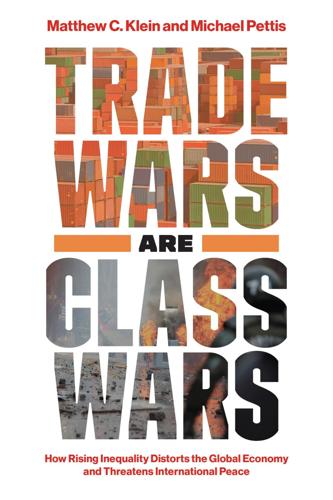
Trade Wars Are Class Wars: How Rising Inequality Distorts the Global Economy and Threatens International Peace
by
Matthew C. Klein
Published 18 May 2020
In the late eighteenth and early nineteenth centuries, British thinkers argued for removing tariffs and other barriers to encourage specialization, while Americans and Germans proposed protecting infant industries to develop diversified domestic markets. The end of the Napoleonic Wars, the mass deployment of steam engines, and the invention of the telegraph led to a boom in trade until the early 1870s—which ended with what some have called the world’s first synchronized global financial crisis, the Panic of 1873. From the late 1880s until World War I, high imperialism in the late nineteenth and early twentieth centuries led to increased trade within larger blocs even as it limited trade between them.
…
He thought that this would be bad for England, but he was unconcerned because he assumed that “most men of property” would be “satisfied with a low rate of profits in their own country, rather than seek a more advantageous employment for their wealth in foreign nations.” It was difficult to supervise investments in foreign countries before the invention of the telegraph and the steamship. Ricardo also thought that “the natural disinclination which every man has to quit the country of his birth” would limit capital outflows.7 Ricardo’s subtle case for free trade depended on persistent differences in rates of return across countries, which in turn depended on investors’ unwillingness to move money abroad.

Nexus: A Brief History of Information Networks From the Stone Age to AI
by
Yuval Noah Harari
Published 9 Sep 2024
Breezes of electronic beams blow through the Iron Curtain as if it was lace.”2 In November 2009, Barack Obama spoke in the same spirit on a visit to Shanghai, telling his Chinese hosts, “I am a big believer in technology and I’m a big believer in openness when it comes to the flow of information. I think that the more freely information flows, the stronger the society becomes.”3 Entrepreneurs and corporations have often expressed similarly rosy views of information technology. Already in 1858 an editorial in The New Englander about the invention of the telegraph stated, “It is impossible that old prejudices and hostilities should longer exist, while such an instrument has been created for an exchange of thought between all the nations of the earth.”4 Nearly two centuries and two world wars later, Mark Zuckerberg said that Facebook’s goal “is to help people to share more in order to make the world more open and to help promote understanding between people.”5 In his 2024 book, The Singularity Is Nearer, the eminent futurologist and entrepreneur Ray Kurzweil surveys the history of information technology and concludes that “the reality is that nearly every aspect of life is getting progressively better as a result of exponentially improving technology.”
…
If a newspaper in Vladivostok or Kaliningrad wrote that the supreme leader’s latest speech was silly (as happened to Lincoln’s Gettysburg Address), then everyone involved—from the editor in chief to the typesetters—would likely have received a visit from the KGB. A BRIEF HISTORY OF TOTALITARIANISM Totalitarian systems assume their own infallibility, and seek total control over the totality of people’s lives. Before the invention of the telegraph, radio, and other modern information technology, large-scale totalitarian regimes were impossible. Roman emperors, Abbasid caliphs, and Mongol khans were often ruthless autocrats who believed they were infallible, but they did not have the apparatus necessary to impose totalitarian control over large societies.
…
But without the invention of technologies like the book and the telegraph, the Christian Church and the Stalinist apparatus would never have been possible. This historical lesson should strongly encourage us to pay more attention to the AI revolution in our current political debates. The invention of AI is potentially more momentous than the invention of the telegraph, the printing press, or even writing, because AI is the first tool that is capable of making decisions and generating ideas by itself. Whereas printing presses and parchment scrolls offered new means for connecting people, AIs are full-fledged members in our information networks. In coming years, all information networks—from armies to religions—will gain millions of new AI members, who will process data very differently than humans.

Grouped: How Small Groups of Friends Are the Key to Influence on the Social Web
by
Paul Adams
Published 1 Nov 2011
Instead, those who are successful with the social web today focus less on the technology itself and more on the communication and interaction it enables with the people they care about. This includes a group size that is hard-wired into our brains by evolution (as you’ll see in Chapter 3). Despite huge advances in communication technology over the past 200 years—for example, the invention of the telegraph, telephone, mobile phone, text messaging, instant messaging, and video calling—our social network structure has largely stayed the same. Our modern communications structure allows us to connect to hundreds and sometimes thousands of people, yet we still have a very small number of close friends.

The Future Is Faster Than You Think: How Converging Technologies Are Transforming Business, Industries, and Our Lives
by
Peter H. Diamandis
and
Steven Kotler
Published 28 Jan 2020
We choose this references because it has the best video. See: https://www.express.co.uk/news/world/947448/robots-japan-tokyo-mayor-artificial-intelligence-ai-news. Networks Change came on May 24, 1844: Library of Congress staff, “Invention of the Telegraph,” Samuel F. B. Morse Papers at the Library of Congress, 1793–1919. See: https://www.loc.gov/collections/samuel-morse-papers/articles-and-essays/invention-of-the-telegraph/. Alexander Graham Bell: See: https://www.loc.gov/item/today-in-history/march-10/. In 1919, less than 10 percent of U.S. households: For a great history of mass communications development, see: https://www.elon.edu/e-web/predictions/150/1870.xhtml.

Humble Pie and Cold Turkey: English Expressions and Their Origins
by
Caroline Taggart
Published 29 Sep 2021
suggests the master, implying that his unknown correspondent has an unnecessarily theatrical approach to note-writing. Modern usage has strayed away from the melodramatic and into the clandestine, the world of secrecy and plotting: There’s lots of cloak-and-dagger negotiation going on, but sooner or later they’ll have to issue a statement. News travels... The invention of the telegraph in the nineteenth century improved the delivery of messages, whether or not they were cloak and dagger in nature. They could now go directly from one place to another down the newly installed wires, arriving at their destination with speed and accuracy. There are several stories to account for less reliable methods of transmission being described as through the grapevine.

Humble Pie and Cold Turkey
by
Caroline Taggart
suggests the master, implying that his unknown correspondent has an unnecessarily theatrical approach to note-writing. Modern usage has strayed away from the melodramatic and into the clandestine, the world of secrecy and plotting: There’s lots of cloak-and-dagger negotiation going on, but sooner or later they’ll have to issue a statement. News travels... The invention of the telegraph in the nineteenth century improved the delivery of messages, whether or not they were cloak and dagger in nature. They could now go directly from one place to another down the newly installed wires, arriving at their destination with speed and accuracy. There are several stories to account for less reliable methods of transmission being described as through the grapevine.

From the Ruins of Empire: The Intellectuals Who Remade Asia
by
Pankaj Mishra
Published 3 Sep 2012
Described by the German kaiser as the most important naval battle since Trafalgar a century earlier, and by President Theodore Roosevelt as ‘the greatest phenomenon the world has ever seen’, the Battle of Tsushima effectively terminated a war that had been rumbling on since February 1904, fought mainly to decide whether Russia or Japan would control Korea and Manchuria. For the first time since the Middle Ages, a non-European country had vanquished a European power in a major war; and the news careened around a world that Western imperialists – and the invention of the telegraph – had closely knit together. In Calcutta, safeguarding the British Empire’s most cherished possession, the viceroy of India, Lord Curzon, feared that ‘the reverberations of that victory have gone like a thunderclap through the whispering galleries of the East’.1 For once the aloof and frequently blundering Curzon had his finger on the pulse of native opinion, which was best articulated by a then unknown lawyer in South Africa called Mohandas Gandhi (1869 – 1948), who predicted ‘so far and wide have the roots of Japanese victory spread that we cannot now visualize all the fruit it will put forth’.2 In Damascus, Mustafa Kemal, a young Ottoman soldier later known as Atatürk (1881 – 1938), was ecstatic.
…
The language of these writings was strikingly similar to those of his speeches to the fellaheen in Egypt: These few pounds of tobacco, which were produced with labor and which a few men with trouble used to export in order to obtain a piece of bread have been coveted and they have been granted to the infidels and forbidden to the followers of the prophet. Oh great human beings, don’t you know yourselves? When are you going to wake up?120 The Persians responded by erupting in angry protests in major cities in the spring of 1891. They were helped by the invention of the telegraph and the secret societies with their leaflets and placards; the mass demonstrations seem to have been as carefully co-ordinated as they would be in Khomeini’s cassette-tape-aided revolution in 1978 – 9, and women participated in large numbers. Al-Afghani wrote furious letters to leading Shiite clerics who were then resident in the shrine cities of Mesopotamia, asking them to shed their political indifference and move against the shah.

The Men Who United the States: America's Explorers, Inventors, Eccentrics and Mavericks, and the Creation of One Nation, Indivisible
by
Simon Winchester
Published 14 Oct 2013
It didn’t move, except when the wind made it vibrate and send out a plangent whistling, somewhat akin to the grass on the plains when the breezes ruffle it like the sea, and it bends and waves and seems to sigh. The all-too-rapid changes afflicting some quarters of American society brought about by the invention of the telegraph were famously caught by the Cincinnati artist Henry Farny in his 1904 painting Song of the Talking Wire, in which a puzzled Plains Indian tries to listen to the conversation supposedly passing overhead. There was something odd about the metal wire. It had to do with movement. Things that shifted their ways along roads and canals and railways and even through the air above—eagles, for instance—could be seen to proceed from place to place.
…
There is what one might term an NPR culture in the country: decisions are often made, conversations are often begun, conferences often commenced, with a simple commonly heard phrase: I heard it on Morning Edition, or more simply, I heard it on NPR. Despite reaching fewer than one in ten of the American public, NPR seems sometimes, in terms of its influence, to be just about everywhere. But can NPR be fairly said to have unified the nation? Did it—indeed, does it today—help connect the people of America in the way that the invention of the telegraph, the laying of the railroad tracks, or the making the Interstate Highway System so unequivocally managed to do? Was that ever the intent of its creators? Was NPR devised to be both a national bulletin board and a social sounding board—or was it to be something with rather more strength, an entity of great size and power that could employ the metaphor of being a network to help link the nation together by an invisible skein of radio waves, and thus forge a bond quite as strong and enduring as any railroad line, telegraph wire, or highway vanishing over the horizon to the mountains?

Capitalism in America: A History
by
Adrian Wooldridge
and
Alan Greenspan
Published 15 Oct 2018
Telegraph lines were much cheaper to construct than railway lines: by 1852, America had twenty-two thousand miles of telegraph lines compared with eleven thousand miles of tracks. They also had a more dramatic effect: information that once took weeks to travel from place A to place B now took seconds. The invention of the telegraph was a much more revolutionary change than the invention of the telephone a few decades later. The telephone (rather like Facebook today) merely improved the quality of social life by making it easier for people to chat with each other. The telegraph changed the parameters of economic life—it broke the link between sending complicated messages and sending physical objects and radically reduced the time it took to send information.
…
The number of households with phones climbed from 250,000 in 1893 to 6 million in 1907. The price of phone calls remained high and the pace of technological progress was slow. The gap between the invention of the phone and the first long-distance phone service between New York and San Francisco was twice as long (thirty-nine years) as the gap between the invention of the telegraph and the first long-distance telegraph service between the two cities (seventeen years). The reason for this was that Bell Telephone was a virtual monopoly. The only thing that kept it on the cutting edge was that the government monopolies that controlled the technology in the rest of the world were even more inefficient than a private monopoly.

Shadows of Empire: The Anglosphere in British Politics
by
Michael Kenny
and
Nick Pearce
Published 5 Jun 2018
The advent of the railways, beginning in Britain in the 1830s, opened up vast land masses to migration and trade, and these new rail networks also reached their fullest development in the Anglo-world: the top five nations in terms of rail miles per capita in 1875 were the USA, New Zealand, Canada, Australia and Great Britain. Meanwhile, the invention of the telegraph collapsed distances in time and space, as cables laid overland and undersea brought near-instantaneous communication.12 The ‘Anglo-diaspora’, argues Belich, was different to other mass migrant communities. It ‘began earlier, was more permanent, and its migrants went to reproductions of their own societies, not someone else's.’13 Land grants, assisted passage, charitable endeavour and government campaigns all played their part in promoting migration, as did the extremes of famine and deprivation.

Free to Focus: A Total Productivity System to Achieve More by Doing Less
by
Michael Hyatt
Published 8 Apr 2019
Put Your Focus to Work Amateurs sit and wait for inspiration, the rest of us just get up and go to work. STEPHEN KING In 1816 Francis Ronalds looped eight miles of wire between two poles in his backyard. Sending signals over the wire keyed to letters of the alphabet, he was able to send messages that could be received and decoded in an instant. Before Ronalds’s invention of the telegraph, messages could only travel as fast as they could be physically transmitted over the necessary distance. Ronalds wrote the British Admiralty with news of his extraordinary breakthrough, expecting an eager reception. Instead, an official responded and said the government had no need of his invention.
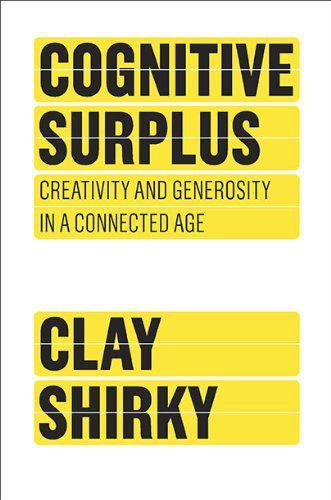
Cognitive Surplus: Creativity and Generosity in a Connected Age
by
Clay Shirky
Published 9 Jun 2010
The opportunity we collectively share, though, is much larger than even a book’s worth of examples can express, because those examples, and especially the ones that involve significant cultural disruption, could turn out to be special cases. As with previous revolutions driven by technology—whether it is the rise of literate and scientific culture with the spread of the printing press or the economic and social globalization that followed the invention of the telegraph—what matters now is not the new capabilities we have, but how we turn those capabilities, both technical and social, into opportunities. The question we now face, all of us who have access to new models of sharing, is what we’ll do with those opportunities. The question will be answered much more decisively by the opportunities we provide for one another and by the culture of the groups we form than by any particular technology.

Why Information Grows: The Evolution of Order, From Atoms to Economies
by
Cesar Hidalgo
Published 1 Jun 2015
To estimate the change in costs fairly, we would need to know how much a late nineteenth-century industrialist would pay for asynchronous technologies such as email, or for a simple Skype call. And it is interesting to note that, as James Gleick describes beautifully in The Information: A History, a Theory, a Flood (New York: Pantheon, 2011), the French invention of the telegraph was based on contraptions whose arm positions were used to transmit information. This mechanical telegraph long predated the electric telegraph that we are more familiar with, and which became the standard image that comes to mind when using the word. 15. Coase, “The Institutional Structure of Production,” highlights the standardization role of money as its most fundamental yet overlooked property. 16.

Billions & Billions: Thoughts on Life and Death at the Brink of the Millennium
by
Carl Sagan
Published 11 May 1998
The real binding up and deprovincial-ization of the planet requires a technology that communicates much faster than horse or sailing ship, that conveys information all over the world, and that is cheap enough to be available, at least occasionally, to the average person. Such a technology began with the invention of the telegraph and the laying of submarine cables; was greatly expanded by the invention of the telephone, using the same cables; and then enormously proliferated with the invention of radio, television, and satellite communications technology. Today we communicate—routinely, casually, with hardly ever a second thought—at the speed of light.

Who's Your City?: How the Creative Economy Is Making Where to Live the Most Important Decision of Your Life
by
Richard Florida
Published 28 Jun 2009
“When the world is flat,” Friedman writes, “you can innovate without having to emigrate.” It’s an old idea with a long history. Since the turn of the twentieth century, commentators have been writing about the leveling effects of trade and technology that make place unimportant. From the invention of the telegraph and the telephone, the automobile and the airplane, to the rise of the personal computer and the Internet, many have argued that technological progress has eroded the economic significance of physical location. The same prophecies persist today. In 1995 The Economist proclaimed the death of distance.

Reinventing Capitalism in the Age of Big Data
by
Viktor Mayer-Schönberger
and
Thomas Ramge
Published 27 Feb 2018
Advancements in the flow of information often underlie a step-change in our coordinative capacity. Assyrian cuneiform enabled our ancestors to organize by recording harvests and transactions. Ships would not only return with precious wares from distant lands, they would also bring back information for armies and merchants. The invention of the telegraph, telephone, and other communications technologies—including the Internet—have greatly improved human coordination through effective communication. And societal institutions help humans coordinate through subtle communication: courts, for instance, send signals about how specific conflicts are settled, thereby reducing the incidences of future disagreements.

Too Big to Know: Rethinking Knowledge Now That the Facts Aren't the Facts, Experts Are Everywhere, and the Smartest Person in the Room Is the Room
by
David Weinberger
Published 14 Jul 2011
There is now more data than Darwin could have imagined. For example, both Thomas Jefferson and George Washington recorded daily weather observations, but they didn’t record them hourly or by the minute. Not only did they have other things to do, such data didn’t seem useful. Even after the invention of the telegraph enabled the centralization of weather data, the 150 volunteers who received weather instruments from the Smithsonian Institution in 1849 still reported only once a day.3 Now there is a literally immeasurable, continuous stream of climate data from satellites circling the earth, buoys bobbing in the ocean, and wi-fi-enabled sensors in the rain forest.4 We are measuring temperatures, rainfall, wind speeds, CO2 levels, and pressure pulses of solar wind.

Before Babylon, Beyond Bitcoin: From Money That We Understand to Money That Understands Us (Perspectives)
by
David Birch
Published 14 Jun 2017
Personal wealth shifted from bank deposits to mutual funds. Cash shifted from bank branches to ATMs. Payments went from cheques to credit cards. But the money stayed the same. This period I classify as the present. It arrived with electronic communications – when even paper became too substantial and too slow for society, and the invention of the telegraph spurred the innovation of electronic money – and it still dominates the way that the man in the street thinks about money. It is the prevailing paradigm, but it is not the truth (a paradigm is a model, remember, not reality). The present, therefore, is about money as information about physical things (paper that represents gold), or, to put it another way, bits about atoms.

Matchmakers: The New Economics of Multisided Platforms
by
David S. Evans
and
Richard Schmalensee
Published 23 May 2016
These two-sided platforms rely on smartphones to connect senders and receivers of messages. People can also use them to send and receive money. They are very convenient. But they seem like small advances and not that novel, when you look at some older two-sided platforms. In 1832, with the invention of the telegraph, it became possible to send messages over long distances very quickly. For thousands of years, it had taken about a day to transmit a message or carry money a hundred miles. That’s how far one could go in a day on horseback.13 The telegraph wasn’t as quick as a phone call or e-mail because people had to get to telegraph stations and attendants had to code and decode their messages.

The Journey of Humanity: The Origins of Wealth and Inequality
by
Oded Galor
Published 22 Mar 2022
Subsequently, the reforms championed by Sir Rowland Hill in the nineteenth-century British postal service allowed ordinary citizens to exchange letters, while the advent of the telegraph – a quantum leap in information transmission technology – made near-instantaneous communication possible between remote regions such as the different sides of the Atlantic. In an age of such rapid transformations, however, even the extraordinary invention of the telegraph was soon eclipsed. In 1876, Alexander Graham Bell – a Scottish-born inventor who had emigrated to Canada and then to the United States – conducted the first call on his newly invented telephone. By the turn of the century, about 600,000 telephones were ringing across America, and by 1910, the number had risen ten-fold to 5.8 million;[4] phone use per capita was equally impressive over this period in Denmark, Sweden, Norway and Switzerland.[5] It is hard to comprehend the leap in the quality of life experienced by people across the globe in the early twentieth century, who could suddenly communicate with relatives, friends and collegues in distant places rather than waiting weeks (or longer) to correspond via letters or spend a fortune on short telegrams.

Nuts and Bolts: Seven Small Inventions That Changed the World (In a Big Way)
by
Roma Agrawal
Published 2 Mar 2023
Though useful in an emergency, these systems were very limited; they weren’t particularly far-reaching, not only in terms of distance and the portion of the population that could send messages, but also in terms of what messages they could actually communicate. The possibility of people communicating across lands in a matter of hours or minutes only became a reality in the last 200 years, when electricity and magnetism had become better understood, leading to the invention of the telegraph. The ability to send information telegraphically changed the way we live. Trade became less risky and variable, as merchants could keep track of prices hourly. The railways could send alerts of the progress of steam engines to keep the network running safely. And news reporting in the way we know it today became possible, because people no longer had to wait days or weeks to hear the latest developments; now, journalists could relay breaking news across distances.
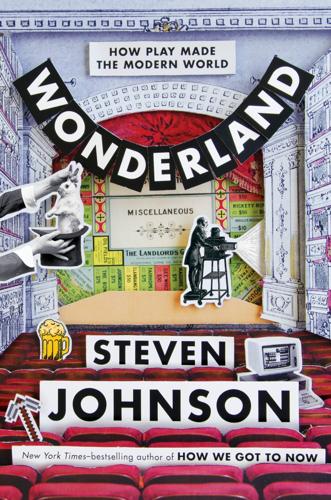
Wonderland: How Play Made the Modern World
by
Steven Johnson
Published 15 Nov 2016
Once again, music appears to leap ahead of where it should logically be on the hierarchy of needs. In 2000 BC, most human settlements around the world hadn’t invented a notation system for language yet. And yet somehow the ancient Sumerians were already composing scores. Rhythm, too, can function as a kind of informational code, as Samuel Morse discovered in the invention of the telegraph. The very first long-distance wireless networks were the “talking drums” of West Africa, percussive instruments that were tuned to mimic the pitch contours of African languages. Complex messages warning of impending invasions, or sharing news and gossip about deaths or marriage ceremonies, could be conveyed at close to the speed of sound across dozens of miles, through relays of drummers situated in each village.
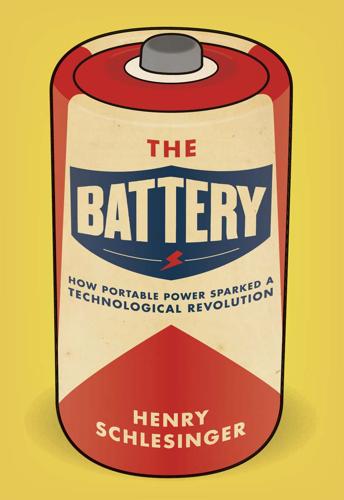
The Battery: How Portable Power Sparked a Technological Revolution
by
Henry Schlesinger
Published 16 Mar 2010
“You can’t throw too much style into a miracle. It costs trouble, and work, and sometimes money; but it pays in the end.” —Mark Twain, A Connecticut Yankee in King Arthur’s Court As the history book legends have it, Samuel Finley Breese Morse defied all doubters and stretched the boundaries of technology with his invention of the telegraph and the code that went with it. It was Morse, or so we are taught, who led the charge in the conquest of distance and united America from coast to coast with the humming, pulsing wires of his invention. What the jurist Oliver Wendell Holmes described as “…a network of iron nerves which flash sensation and volition backward and forward to and from towns and provinces as if they were organs and limbs of a single living body.”

Here Comes Everybody: The Power of Organizing Without Organizations
by
Clay Shirky
Published 28 Feb 2008
The predicted end point of this process was a progressive disassociation of social life from real space, leading to the death of cities as the population spread out to more bucolic spots. The assumption that communications tools are (or will someday be) a good substitute for travel assumes that people mainly gather together for utilitarian reasons of sharing information. Companies have been selling us this idea since the invention of the telegraph, and AT&T’s famous Picturephone, first launched at the 1964 World’s Fair, was pitched as a way to reduce the need for travel. This reduction did not happen, not in 1964 or ever. If communication were a substitute for travel, then the effects would have shown up by now, but they haven’t.
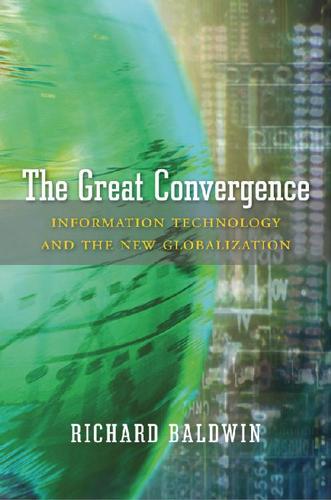
The Great Convergence: Information Technology and the New Globalization
by
Richard Baldwin
Published 14 Nov 2016
People could and did migrate in massive numbers. But travel was incredibly slow, risky, and expensive. For example, most European and Asians who moved to the New World never saw their homelands again. Most ideas moved in the old way—via books and experts—but this period did see a real change with the invention of the telegraph. By the late 1800s, most nations were connected by telegraph lines. Goods and people still had to travel by boat, rail, or road, but now ideas could travel by wire. The telegraph had enormous effects on societies, but it did little to challenge the locality of most know-how. Long-distance communication remained extremely expensive—especially internationally.

AI Superpowers: China, Silicon Valley, and the New World Order
by
Kai-Fu Lee
Published 14 Sep 2018
They then leveraged China’s internet revolution and mobile internet explosion to breathe life into the country’s new consumer-driven economy. But as remarkable as these accomplishments have been, these changes will pale in comparison to what these entrepreneurs will do with the power of artificial intelligence. The dawn of the internet in China functioned like the invention of the telegraph, shrinking distances, speeding information flows, and facilitating commerce. The dawn of AI in China will be like the harnessing of electricity: a game-changer that supercharges industries across the board. The Chinese entrepreneurs who sharpened and honed their skills in the coliseum now see the power that this new technology holds, and they’re already seeking out industries and applications where they can turn this energy into profit.

Future Files: A Brief History of the Next 50 Years
by
Richard Watson
Published 1 Jan 2008
New technologies and ideas are nearly always resisted at first; the stronger or more disruptive the idea, the more resistance there will be at both a direct level (physical actions) and indirect level through the creation of myths. The cellphone, for example, is one of the most successful innovations of recent times and yet its ubiquity has done little to dispel safety fears surrounding its use. Similarly, the invention of the telegraph created a widespread belief that signals would interfere with the weather, while the introduction of trains and automobiles was predicted to create a variety of physical and mental disorders. I was talking to an 86-year-old man recently about cellphone masts and he pointed out that exactly the same objections were raised when lamp-posts were first introduced.
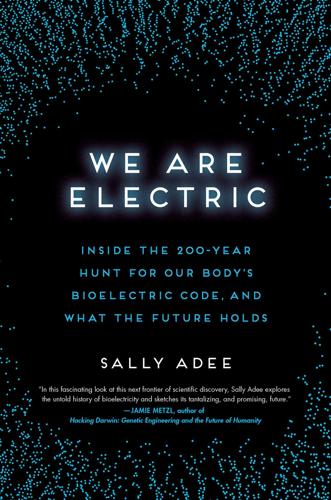
We Are Electric: Inside the 200-Year Hunt for Our Body's Bioelectric Code, and What the Future Holds
by
Sally Adee
Published 27 Feb 2023
The war, with its years of effort that involved breaking code and intercepting transmissions, had given Adrian a new conceptual lens through which to understand what he was seeing.9 The mechanism he had found in the nerve’s information transmission looked like a kind of bioelectric Morse code. Nerve impulses, and the nervous system in general, had been described in terms of information communication since the invention of the telegraph in the previous century. But when Adrian discovered that the nerve impulse was just a series of variable-in-time brief pulses (Morse code without the dashes), he was struck by the way this limited signal was able to pass on complex information (the sensation of stretch). “In any one fiber the waves are all of the same form and the message can only be varied by the changes in the frequency and duration of the discharge.
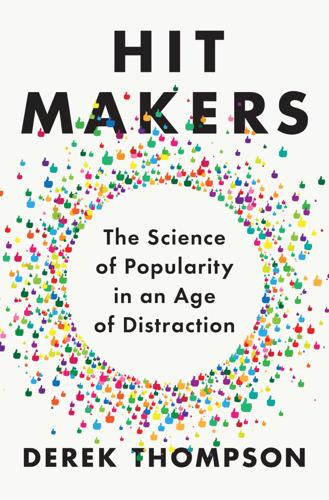
Hit Makers: The Science of Popularity in an Age of Distraction
by
Derek Thompson
Published 7 Feb 2017
Journalists were members of their own audiences, and editors did not have to agonize over what to put in the paper, since writing for one’s readers often meant writing for oneself. But the papers of the early twentieth century were a different beast altogether—national rather than local, pluralistic rather than purely ethnic. Urbanization encouraged smaller papers to consolidate. The invention of the telegraph and the syndication of news brought far-flung stories to local readers. The business of newspapers was changing, but so was the basic charge of journalism. As newspapers got bigger, editors were responsible for reaching a massive and diverse group of readers they didn’t know at all. Writing for one’s audience no longer meant writing for one’s neighbors.
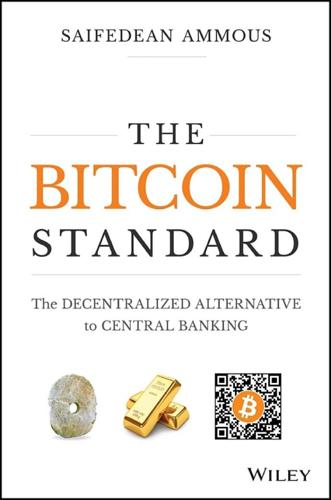
The Bitcoin Standard: The Decentralized Alternative to Central Banking
by
Saifedean Ammous
Published 23 Mar 2018
Telephone, wireless telegraphy, voice recording, color photography, movies: While we like to think of our modern era as being the era of mass telecommunication, in reality, most of what we have achieved in the twentieth century was to improve on the innovations of the nineteenth. The first computer was the Babbage computer, designed in 1833 by Charles Babbage, but completed by his son Henry in 1888. It might be an exaggeration to say that the Internet and all it contains are bells and whistles added onto the invention of the telegraph in 1843, but it does contain a kernel of truth. It was the telegraph which fundamentally transformed human society by allowing for communication without the need for the physical transport of letters or messengers. That was telecommunication's zero‐to‐one moment, and everything that followed, for all its wonders, has been a one‐to‐many improvement.

Superminds: The Surprising Power of People and Computers Thinking Together
by
Thomas W. Malone
Published 14 May 2018
HOW WILL THE GLOBAL MIND CHANGE WITH NEW INFORMATION TECHNOLOGIES? For most of its existence, the global mind operated so slowly and with such weak connections among its many parts that we could be forgiven for not noticing it was there at all. But starting about 200 years ago, with the invention of the telegraph and continuing with the radio, telephone, television, and Internet, the global mind has become far more connected than ever before. The number, speed, and capacity of connections in the global mind has exploded in the last two centuries. This hyperconnectivity is making the global mind harder and harder to ignore.

The Four Pillars of Investing: Lessons for Building a Winning Portfolio
by
William J. Bernstein
Published 26 Apr 2002
No human being, no manufactured item, no bushel of wheat, no side of beef, no letter, no information, no idea, order or instruction of any kind moved faster. Nothing had moved any faster, and, as far as Jefferson’s contemporaries were able to tell, nothing ever would. The revolution in communication was even more dramatic. For most of recorded history, information traveled as slowly as physical goods. With the invention of the telegraph by Cooke and Wheatstone in 1837, instantaneous telegraphy abruptly changed the face of economic, military, and political affairs in ways that can scarcely be comprehended by even our modern technologically jaded sensibilities. It is humbling to realize that the news of Grover Cleveland’s election in 1884 traveled from New York to San Francisco and London almost as quickly as it would today.
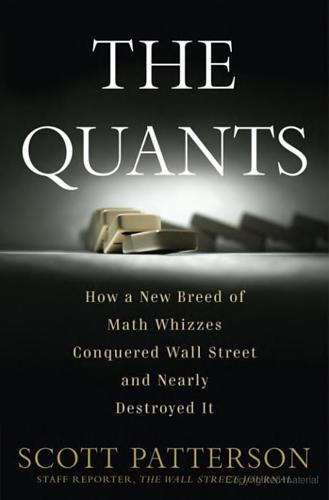
The Quants
by
Scott Patterson
Published 2 Feb 2010
Say gold is trading for $1,000 in New York and $1,050 in London. A fleet-footed arbitrageur will buy that New York gold and sell it in London (instantaneously), pocketing the $50 difference. While this was difficult when traders were swapping stocks beneath a buttonwood tree on Wall Street in the eighteenth century, the invention of the telegraph—and the telephone, the high-speed modem, and a grid of orbiting satellites—has made it much easier to accomplish in modern times. Such obvious discrepancies in practice are rare and are often hidden in the depths of the financial markets like gold nuggets in a block of ore. That’s where the quants, the math whizzes, step in.

Human Frontiers: The Future of Big Ideas in an Age of Small Thinking
by
Michael Bhaskar
Published 2 Nov 2021
We think of Apple and Google as sizeable, powerful and innovative beyond parallel, but forget that AT&T once dominated the Dow Jones index, employed a million people, held a monopoly on US telecommunications and invented the foundations of modern computing (more of which later). The Internet didn't destroy distance; it was already dying, mortally wounded since the invention of the telegraph in the 1840s. We have graphene; the 1930s had nylon, neoprene and Teflon. We have genetic engineering, but its foundations were laid over a century ago. We often think of our time as one of unique acceleration.27 But this is an illusion. We just haven't adjusted to a new reality: slowdown.
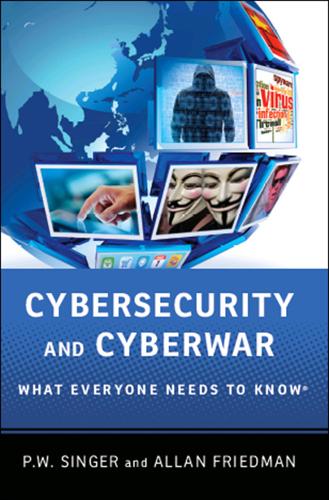
Cybersecurity: What Everyone Needs to Know
by
P. W. Singer
and
Allan Friedman
Published 3 Jan 2014
But before they could type the “g” in the word “log,” the computer at the Stanford end of the network crashed. However, the ARPANET project, so named as it was funded by the Advanced Research Projects Agency (ARPA), would eventually transform how computers shared data and, with that, everything else. Electronic communication networks have been shaping how we share information since the invention of the telegraph, the device that some now look back on and call the “Victorian Internet.” The hype around that old technology were similarly high; contemporaries declared that, with the telegraph, “It is impossible that old prejudices and hostilities should longer exist.” What makes the Internet distinct from prior communication networks like the old telegraphs and then telephone networks, however, is that it is packet-switched instead of circuit-switched.
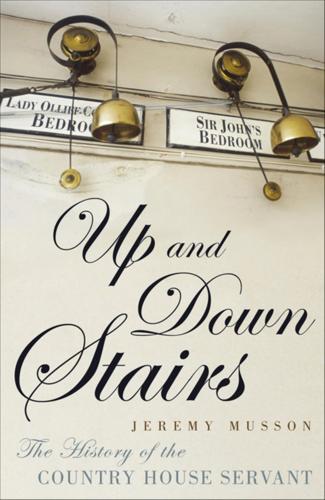
Up and Down Stairs: The History of the Country House Servant
by
Jeremy Musson
Published 12 Nov 2009
Until the passage of the National Insurance Act in 1911, there was actually no legislation that legally protected the servant in sickness or old age.3 The constant refinement of technology during the nineteenth century meant that light and heat no longer needed so much manual labour. Even the carrying of messages by trusted hands was made obsolete by the successive invention of the telegraph in the 1830s and the telephone in the 1870s. Most significantly perhaps, increased taxation had an immense impact on the economy of the country house. Large staffs began to shrink in the 1930s – some houses dispensing entirely with senior menservants and opting instead for parlourmaids who were paid less.

American Kleptocracy: How the U.S. Created the World's Greatest Money Laundering Scheme in History
by
Casey Michel
Published 23 Nov 2021
A small, boutique outfit, Riggs pitched itself to clients in Washington as the “bank of presidents,”2 catering to diplomats, politicians, and their assorted retinues. And it had the legacy to back it up: Riggs could track its clientele back to Abraham Lincoln, having helped finance everything from the invention of the telegraph to the purchase of Alaska. It was one of the oldest banks in America’s capital, and was, as one write-up described it, “venerable.”3 At the turn of the twenty-first century, that reputation remained intact. While other banking giants spun off in new directions, Riggs’s clientele appeared localized to the power players in Washington and the foreign officials passing through.

To the Ends of the Earth: Scotland's Global Diaspora, 1750-2010
by
T M Devine
Published 25 Aug 2011
In return, the primary producers acquired ships, locomotives, bridges and railroads which then went to build the infrastructure in the New World for yet further expansion in global trade. The entire system was lubricated by the revolution in transportation and the flow of information: improvements in the design and speed of sailing ships; the arrival of the ocean-going steamships; the crucial invention of the telegraph, at a stroke providing instant commercial intelligence; and the construction of transcontinental railways, such as the Canadian–Pacific. These unlocked the production potential of vast territories, from the prairies of North America to the plains of India, while the opening of the Suez Canal transformed the connections with Asia and the East.
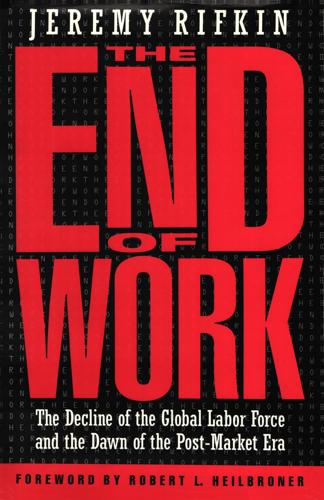
The End of Work
by
Jeremy Rifkin
Published 28 Dec 1994
When the Western Railroad experienced a Post-Fordism 93 series of accidents on its Hudson River rail, culminating in a head-on crash on October 4, 1841, that killed a passenger and conductor, the company responded to the growing safety problem by instituting elaborate changes in its organizational management, including a more systematic process of data collection from its roadmasters and faster dissemination of vital scheduling information to its train crews. The innovations in management, says historian Alfred Chandler, made Western Railroad "the first modem, carefully defined, internal organizational structure used by American business enterprise."lO The invention of the telegraph in 1844 greatly facilitated communications, allowing the railroads to expand across the continent. Together, the rail and telegraph provided the critical transportation and communication infrastructure to serve a national market stretching some 3,000 miles. To meet the needs of this new market, other businesses began to adopt their own increasingly sophisticated managerial schemes.
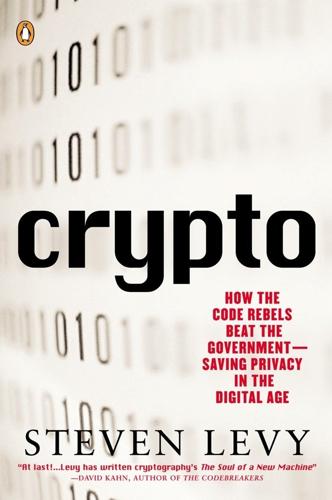
Crypto: How the Code Rebels Beat the Government Saving Privacy in the Digital Age
by
Steven Levy
Published 15 Jan 2002
And the more he thought about the problem, the more he came to understand how deeply, deeply important the issue was. Especially in what he saw as the coming era of computational ubiquity. As more people used computers, wireless telephones, and other electronic devices, they would demand cryptography. Just as the invention of the telegraph upped the cryptographic ante by moving messages thousands of miles in the open, presenting a ripe opportunity for eavesdroppers of every stripe, the computer age would be moving billions of messages previously committed to paper into the realm of bits. Unencrypted, those bits were low-hanging fruit for snoopers.
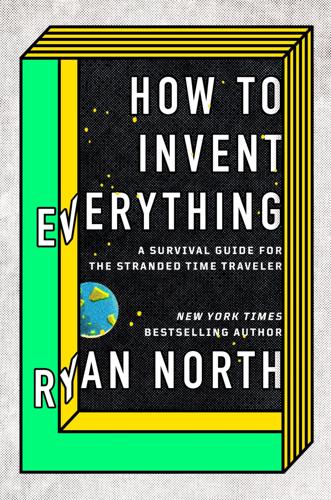
How to Invent Everything: A Survival Guide for the Stranded Time Traveler
by
Ryan North
Published 17 Sep 2018
8.12: PIGEONS NATIVE RANGE Europe, Asia FIRST EVOLVED 231,000,000 BCE (earliest ancestors) 50,000,000 BCE (earlier ancestors that are safer to encounter) DOMESTICATED 10,000 BCE USES Originally domesticated as a food animal, they became way more useful when we realized that they can find their way back to their home nest even when released from an unfamiliar location up to 1000km away, making them useful for carrying messages. Up to the invention of the telegraph (1816 CE) pigeons were one of the very few methods of rapid long-distance communication available. NOTES Pigeons are the first domesticated birds! They’re descended from the rock pigeons, which, like all birds, are descended from dinosaurs: a diverse group of animals that thousands of other temporal tourists have safely encountered between 231,000,000 BCE and 65,000,000 BCE in their FC3000™ personal time machine, and which you may also briefly and much more unsafely encounter, should you be unfortunate enough to find yourself stranded in that particular time range. 8.13: RABBITS NATIVE RANGE Asia FIRST EVOLVED 40,000,000 BCE (early ancestors) 500,000 BCE (modern rabbit) DOMESTICATED 400 CE USES Rabbits are a convenient source of meat and fur: they’re small, pose absolutely no threat to hunters, and reproduce rapidly: so much so that predation is generally all that keeps their population in check, so don’t feel too bad about hunting these defenseless, adorable fur balls.
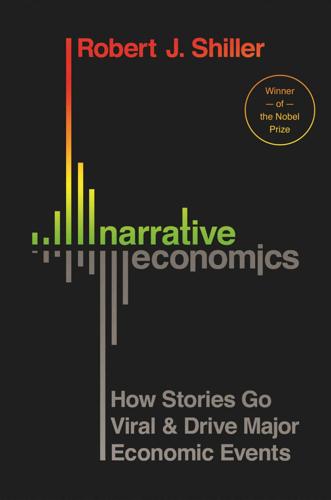
Narrative Economics: How Stories Go Viral and Drive Major Economic Events
by
Robert J. Shiller
Published 14 Oct 2019
New Technology Will Change Contagion Rates and Recovery Rates Notable changes in information technology, with changes in contagion rates and recovery rates, have occurred over the course of history. The early invention of printed books in China, the invention of Gutenberg’s printing press in the fifteenth century, the invention of newspapers in Europe in the seventeenth century, the invention of the telegraph and telephone in the nineteenth century, the invention of radio and television in the twentieth, and the rise of the Internet and social media have all fundamentally altered the nature of contagion, but to date there has been no systematic quantitative study of these inventions’ impact on contagion.

Investment: A History
by
Norton Reamer
and
Jesse Downing
Published 19 Feb 2016
Furthermore, many governments loosened restrictions on corporate formation at this time, making it easier for entrepreneurs to start their own businesses; these new businesses, then, issued debt or equity for the first time, further fueling financial markets.76 As a result of these changes, the combined capitalization of these enterprises exceeded the gross debt of nations for the first time in the early twentieth century.77 Technology also played a vital role in the continued evolution of public capital markets. The most influential technologies were those that affected the spread of information, given the importance of accurate data in making financial decisions. The first in a series of such inventions came in 1844 with the invention of the telegraph, which allowed relatively convenient and immediate communication among markets and cities. In 1866, the first transatlantic cable was completed, allowing near-instantaneous communication between the key global financial centers of London and New York. The next year, the stock 90 Investment: A History ticker was introduced.

The Moral Animal: Evolutionary Psychology and Everyday Life
by
Robert Wright
Published 1 Jan 1994
It also explains why the ensuing evolution of technology, and of culture more broadly, was very likely to enrich and expand the social structure of that intelligent species, carrying social organization to planetary breadth. Globalization, it seems to me, has been in the cards not just since the invention of the telegraph or the steamship, or even the written word or the wheel, but since the invention of life. The current age, in which relations among nations grow more non-zero-sum year by year, is the natural outgrowth of several billion years of unfolding non-zero-sum logic. YOU CALL THAT DESTINY?
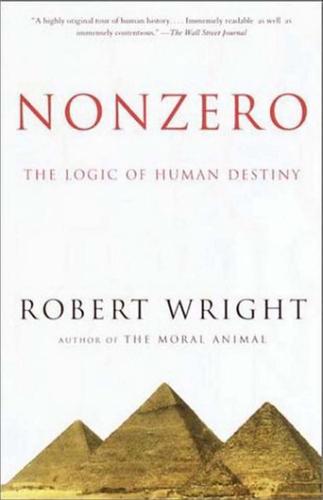
Nonzero: The Logic of Human Destiny
by
Robert Wright
Published 28 Dec 2010
It also explains why the ensuing evolution of technology, and of culture more broadly, was very likely to enrich and expand the social structure of that intelligent species, carrying social organization to planetary breadth. Globalization, it seems to me, has been in the cards not just since the invention of the telegraph or the steamship, or even the written word or the wheel, but since the invention of life. The current age, in which relations among nations grow more non-zero-sum year by year, is the natural outgrowth of several billion years of unfolding non-zero-sum logic. YOU CALL THAT DESTINY?

Adaptive Markets: Financial Evolution at the Speed of Thought
by
Andrew W. Lo
Published 3 Apr 2017
Technological innovation has always been intimately interconnected with financial innovation, a coevolutionary process in which adaptations in one domain have influenced innovation in the other. New stamping and printing processes, used to prevent coin clipping, counterfeiting, and other forms of financial fraud, led directly to the modern system of paper banknotes and token coinage. The invention of the telegraph sparked a continent-spanning communications revolution that spurred the creation of the modern futures market in nineteenth-century Chicago. And improvements to the ticker tape machine—symbolic of Wall Street for over a century—made Thomas Edison his early fortune. The symbiosis between technology and finance has accelerated the pace of the financial markets beyond mere human capacity.

Firepower: How Weapons Shaped Warfare
by
Paul Lockhart
Published 15 Mar 2021
Steam engines made it possible to power factory machinery without direct access to moving water and hydrokinetic energy. Soon steam engines propelled cargo vessels and warships, and then an entirely new kind of land transportation: the railroad. Industry gave birth to the steamship and the railroad, and the steamship and the railroad in turn bolstered industry. The invention of the telegraph, which spread with the dramatic growth of rail lines in the 1850s and 1860s, was another civilian technology rich with applications for warfare. Railroads could move men and supplies in a matter of hours across distances that would have consumed weeks of travel by foot. The telegraph made it possible for armies, their high commands, and their governments to exchange information in minutes rather than days.
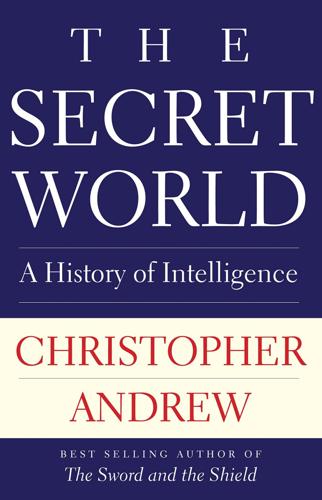
The Secret World: A History of Intelligence
by
Christopher Andrew
Published 27 Jun 2018
Because of their lack of awareness of the role of SIGINT, none of the numerous twentieth-century histories of the origins of the First World War mentions that, in both St Petersburg and Paris, the first indication in July 1914 that Austria was preparing to deliver the ultimatum to Serbia which was to trigger the outbreak of war came from diplomatic decrypts.17 The First World War, thanks to its unprecedented scale and intensity in an era of equally unprecedented technological change, marked an even greater turning point in intelligence history than the Renaissance. The vast increase in communications made possible by the nineteenth-century invention of the telegraph and wireless gave SIGINT a greater operational role than in any previous conflict. Particularly in the early stages of the war, however, war leaders’ ignorance of past experience made them ill-equipped to put intelligence to good use. Despite the pre-war successes of Russian foreign intelligence, Russian military intelligence at the outbreak of war was far less effective than it had been a century before on the eve of Napoleon’s invasion of Russia.
…
Henderson added that investigation by the Met of Russian political exiles would, in any case, be ‘worse than useless’.61 Despite the creation of the Criminal Investigation Department (CID) in 1877, Superintendent Adolphus ‘Dolly’ Williamson complained in 1880 that detective work remained unpopular within the Met: The uncertainty and irregularity of the duties . . . are . . . no doubt in many cases very distasteful and repugnant to the better class of men in the service, as their duties constantly bring them into contact with the worst classes, frequently cause unnecessary drinking, and compel them at times to resort to trickey [sic] practices which they dislike.62 20 The Telegraph, Mid-Century Wars and the ‘Great Game’ The invention of the telegraph, first successfully demonstrated at the beginning of the reign of Queen Victoria, began ‘the greatest revolution in communications since the development of the printing press’.1 The Crimean War (1853–6), the first war between great powers since Waterloo, was also the first in which the telegraph played a major role.
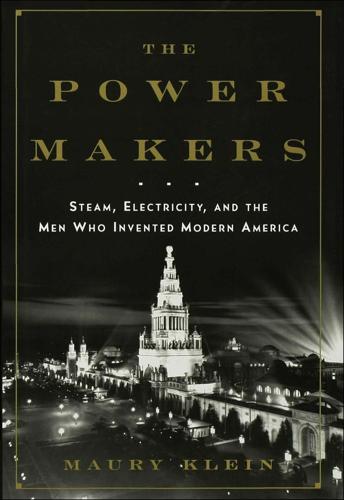
The Power Makers
by
Maury Klein
Published 26 May 2008
By then Maxwell had published his brilliant theories on electricity and the quest for an incandescent lightbulb was under way. As for Morse, like other inventors he had to endure years of litigation challenging his patent. In all he defended no fewer than fifteen suits. The worst of them revolved around an ugly wrangle with Joseph Henry over the latter’s role in the invention of the telegraph. Despite these troubles, Morse lived long enough to gain both fortune and fame at home and abroad. He married his deaf cousin, Sarah Griswold, in 1848, had three more children, and raised them on a hundred-acre farm he bought near Poughkeepsie, New York. On a trip to Europe in 1856 he made a pilgrimage to the laboratory of Hans Oersted and sat reverently in the inventor’s chair.
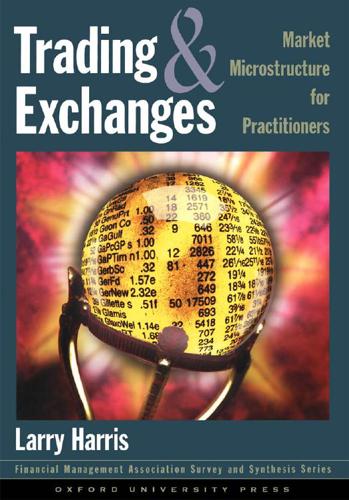
Trading and Exchanges: Market Microstructure for Practitioners
by
Larry Harris
Published 2 Jan 2003
If Napoleon’s Grande Armée defeated the English-Prussian allies under the command of Lord Wellington, British consol bonds would fall. If Napoleon lost, the consols would rise. On June 18, however, the London traders did not even know that the battle had started. They learned the official outcome of the battle only after the Cabinet received Wellington’s dispatch at 11 P.M. on June 21. Communications before the invention of the telegraph were much slower than now. The Rothschild family of investment bankers ran a private system of couriers to move information, securities, currency, and bullion throughout Europe. Their system was very fast, given the available technology. The Rothschild brothers often were the first to learn news in their respective cities.
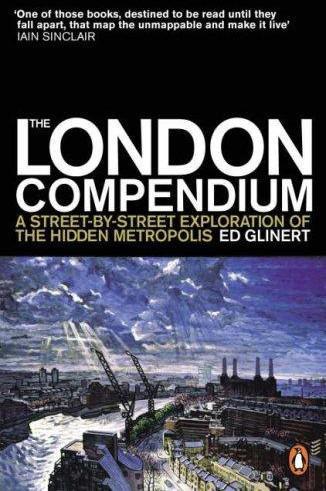
The London Compendium
by
Ed Glinert
Published 30 Jun 2004
By the beginning of the twenty-first century Admiralty House was being used as their residence by various MPs, including John Prescott, deputy prime minister, whose tenure was marred by blown fuses, exploding lights and faulty microwave ovens courtesy of the property’s antiquated electrics. Old Admiralty Long-time home to the Navy, the building was designed by Thomas Ripley in the 1720s to replace a Christopher Wren block that had been constructed only twenty-five years previously and is shielded from Whitehall by Robert Adam’s Admiralty Screen of 1759–61. Before the invention of the telegraph the Admiralty was equipped with rooftop semaphore, and when the British general Charles Cornwallis surrendered at Yorktown in 1781, a defeat which hastened the end of the American War of Independence, news was sent across the Atlantic, received in Britain at Falmouth, and dispatched to the Admiralty, from where it was sent by semaphore to Lord Germain’s house on Pall Mall, Germain then speeding off to 10 Downing Street to inform the prime minister, Lord North.

The Codebreakers: The Comprehensive History of Secret Communication From Ancient Times to the Internet
by
David Kahn
Published 1 Feb 1963
For 300 years, the only great book of this kind in cryptology was Porta’s. He was the first to delineate a coherent image of cryptology. His ideas remained viable so long because cryptology underwent no essential change; communication was by messenger, and consequently the nomenclator reigned. But his views no longer sufficed after the invention of the telegraph. New conditions demanded new theses, new insights. And in 1883 cryptology got them in the form of its second great book of the outward-looking kind, La Cryptographie militaire. Its author was born Jean-Guillaume-Hubert-Victor-François-Alexandre-Auguste Kerckhoffs von Nieuwenhof on January 19, 1835, at Nuth, Holland, son of a well-to-do landlord and a member of one of the oldest and most honorable families of the Flemish duchy of Limburg.